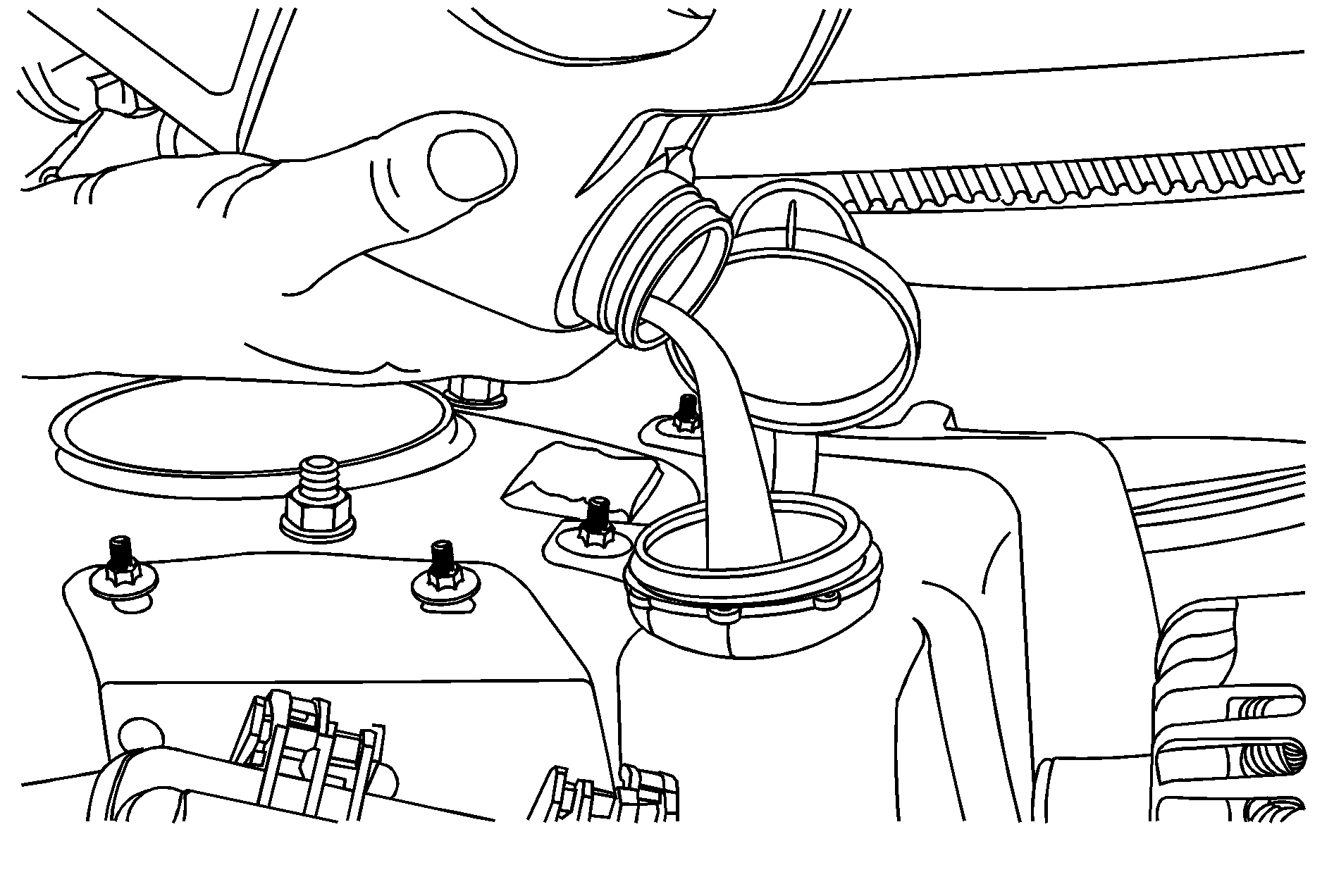When you decide it is safe to lift the hood, this is what you will see:
3.8L V6 Engine
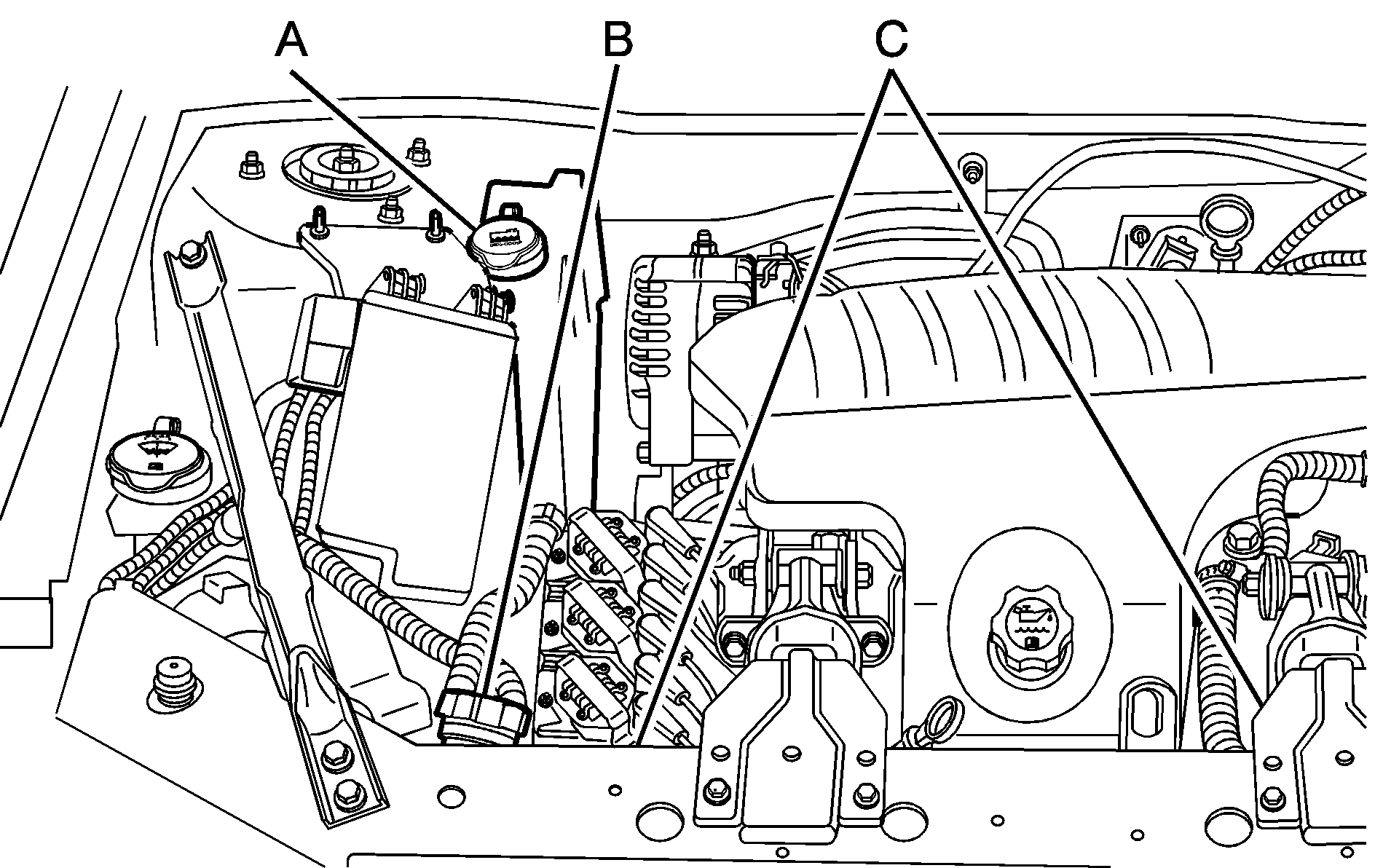
Coolant Recovery Tank
Radiator Pressure Cap
Electric Engine Cooling Fans
3.6L V6 Engine
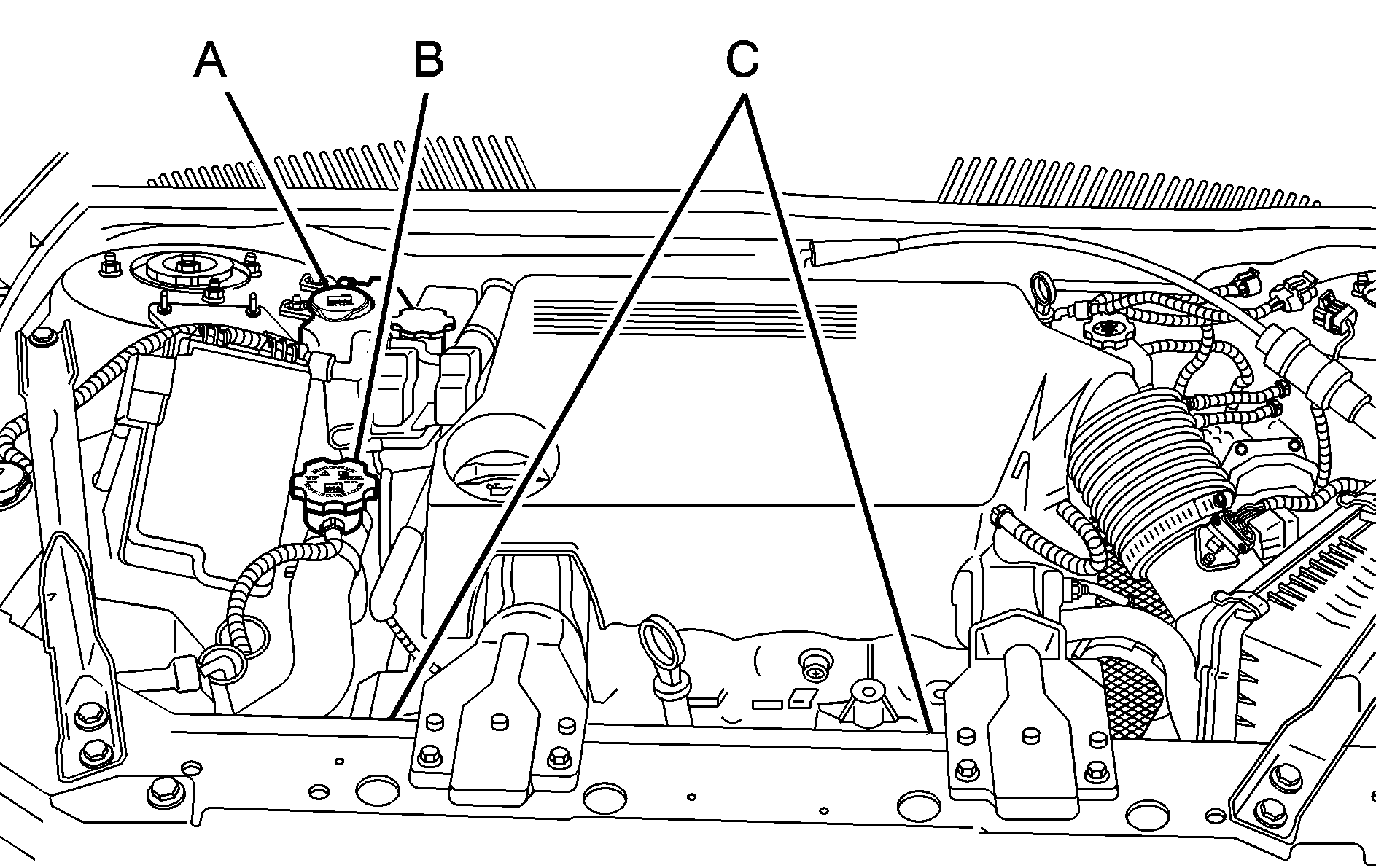
Coolant Recovery Tank
Pressure Cap
Electric Engine Cooling Fans
Caution: An electric engine cooling fan under the hood can start up even when the engine is not running and can cause injury. Keep hands, clothing, and tools away from any underhood electric fan.
If the coolant inside the coolant recovery tank is boiling, do not do anything else until it cools down. The vehicle should be parked on a level surface.
When the engine is cold, the coolant level should be at or above the cold fill line on the coolant recovery tank. If it is not, there may be a leak at the pressure cap or in the radiator hoses, heater hoses, radiator, water pump, or somewhere else in the cooling system.
Caution: Heater and radiator hoses, and other engine parts, can be very hot. Do not touch them. If you do, you can be burned.
Do not run the engine if there is a leak. If you run the engine, it could lose all coolant. That could cause an engine fire, and you could be burned. Get any leak fixed before you drive the vehicle.If there seems to be no leak, with the engine on, check to see if the electric engine cooling fans are running. If the engine is overheating, the fans should be running. If the fans are not running, the vehicle needs service.
Notice: Engine damage from running your engine without coolant is not covered by your warranty. See Overheated Engine Protection Operating Mode for information on driving to a safe place in an emergency.
Notice: Using coolant other than DEX-COOL® can cause premature engine, heater core, or radiator corrosion. In addition, the engine coolant could require changing sooner, at 30,000 miles (50 000 km) or 24 months, whichever occurs first. Any repairs would not be covered by the vehicle warranty. Always use DEX-COOL® (silicate-free) coolant in the vehicle.
How to Add Coolant to the Coolant Recovery Tank
Caution: Adding only plain water to the cooling system can be dangerous. Plain water, or some other liquid such as alcohol, can boil before the proper coolant mixture will. The vehicle's coolant warning system is set for the proper coolant mixture. With plain water or the wrong mixture, the engine could get too hot but you would not get the overheat warning. The engine could catch fire and you or others could be burned. Use a 50/50 mixture of clean, drinkable water and DEX-COOL® coolant.
If you have not found a problem yet, but the coolant level is not at the cold fill line, add a 50/50 mixture of clean, drinkable water and DEX-COOL® engine coolant at the coolant recovery tank. See Engine Coolant for more information.
Notice: In cold weather, water can freeze and crack the engine, radiator, heater core and other parts. Use the recommended coolant and the proper coolant mixture.
Caution: You can be burned if you spill coolant on hot engine parts. Coolant contains ethylene glycol and it will burn if the engine parts are hot enough. Do not spill coolant on a hot engine.
When the coolant level in the coolant recovery tank is at the cold fill line, start the vehicle.
If the overheat warning continues, there is one more thing you can try. You can add the proper coolant mixture directly to the cooling system through the coolant fill neck under the pressure cap, but be sure the system is cool before you do it.
Caution: Steam and scalding liquids from a hot cooling system can blow out and burn you badly. They are under pressure, and if you turn the surge tank pressure cap -- even a little -- they can come out at high speed. Never turn the cap when the cooling system, including the surge tank pressure cap, is hot. Wait for the cooling system and surge tank pressure cap to cool if you ever have to turn the pressure cap.
How to Add Coolant to the Radiator (3.8L V6 Engine)
Notice: Your engine has a specific radiator fill procedure. Failure to follow this procedure could cause your engine to overheat and be severely damaged.
- Turn the pressure cap slowly counterclockwise until it first stops. Do not press down while turning the pressure cap. If you hear a hiss, wait for that to stop. A hiss means there is still some pressure left.
- Then keep turning the pressure cap, but now push down as you turn it. Remove the pressure cap.
- See Engine Compartment Overview for more information on location.
- Fill the radiator with the proper DEX-COOL® coolant mixture, up to the base of the filler neck. See Engine Coolant for more information about the proper coolant mixture.
- Rinse or wipe any spilled coolant from the engine and the compartment.
- Then fill the coolant recovery tank to the cold fill line.
- Put the cap back on the coolant recovery tank, but leave the radiator pressure cap off.
- Start the engine and let it run until you can feel the upper radiator hose getting hot. Watch out for the engine cooling fans.
- By this time, the coolant level inside the radiator filler neck may be lower. If the level is lower, add more of the proper DEX-COOL® coolant mixture through the filler neck until the level reaches the base of the filler neck.
- Then replace the radiator pressure cap. At any time during this procedure if coolant begins to flow out of the filler neck, reinstall the pressure cap. Be sure the pressure cap is hand-tight and fully seated.
- Check the coolant in the recovery tank. The level in the coolant recovery tank should be at the cold fill line when the engine is cold.
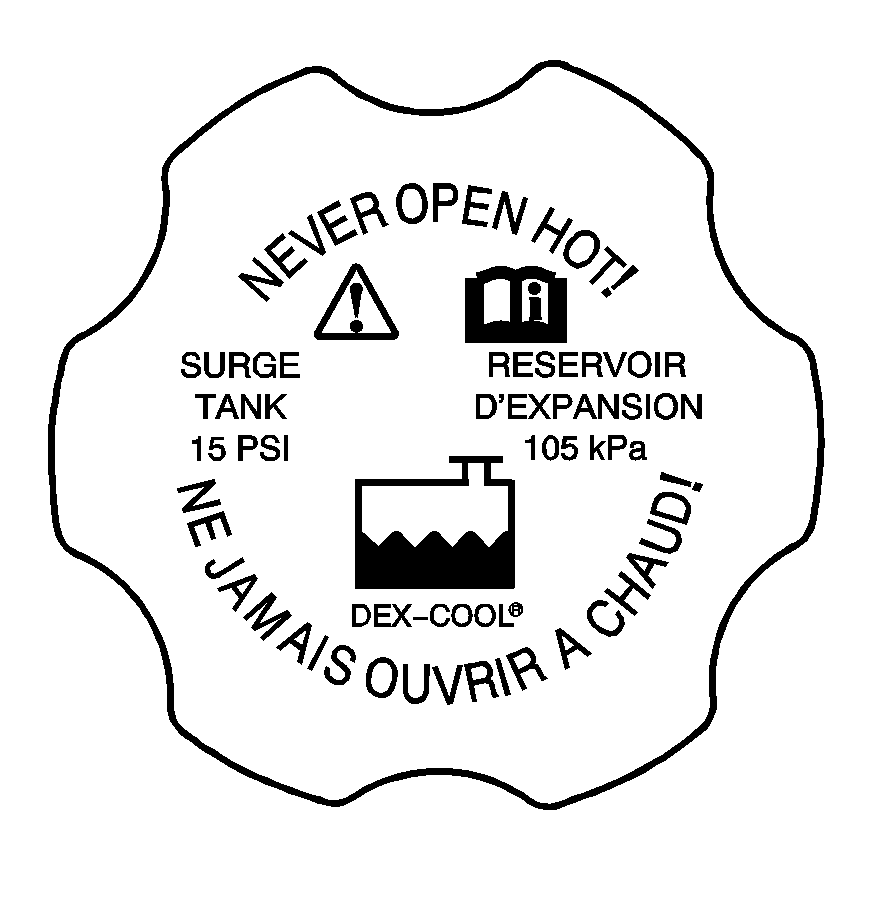
You can remove the radiator pressure cap when the cooling system, including the radiator pressure cap and upper radiator hose, is no longer hot.
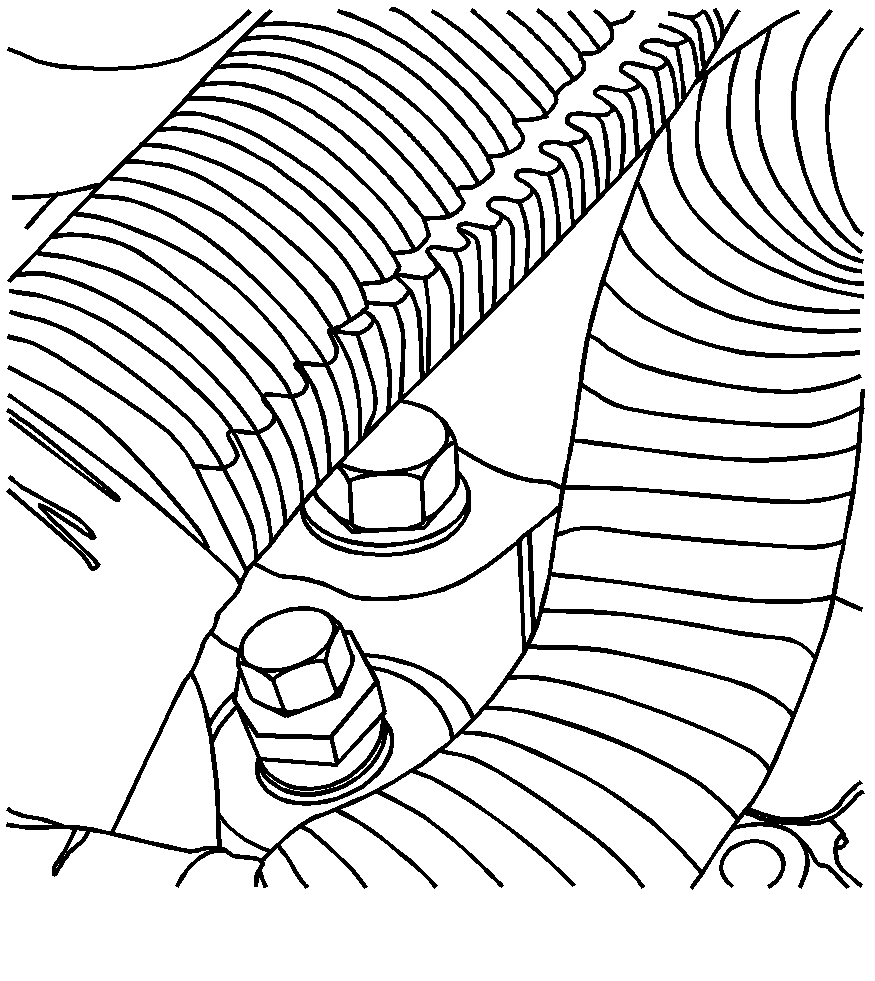
Open the coolant air bleed valve located on the thermostat housing, near the upper radiator hose.
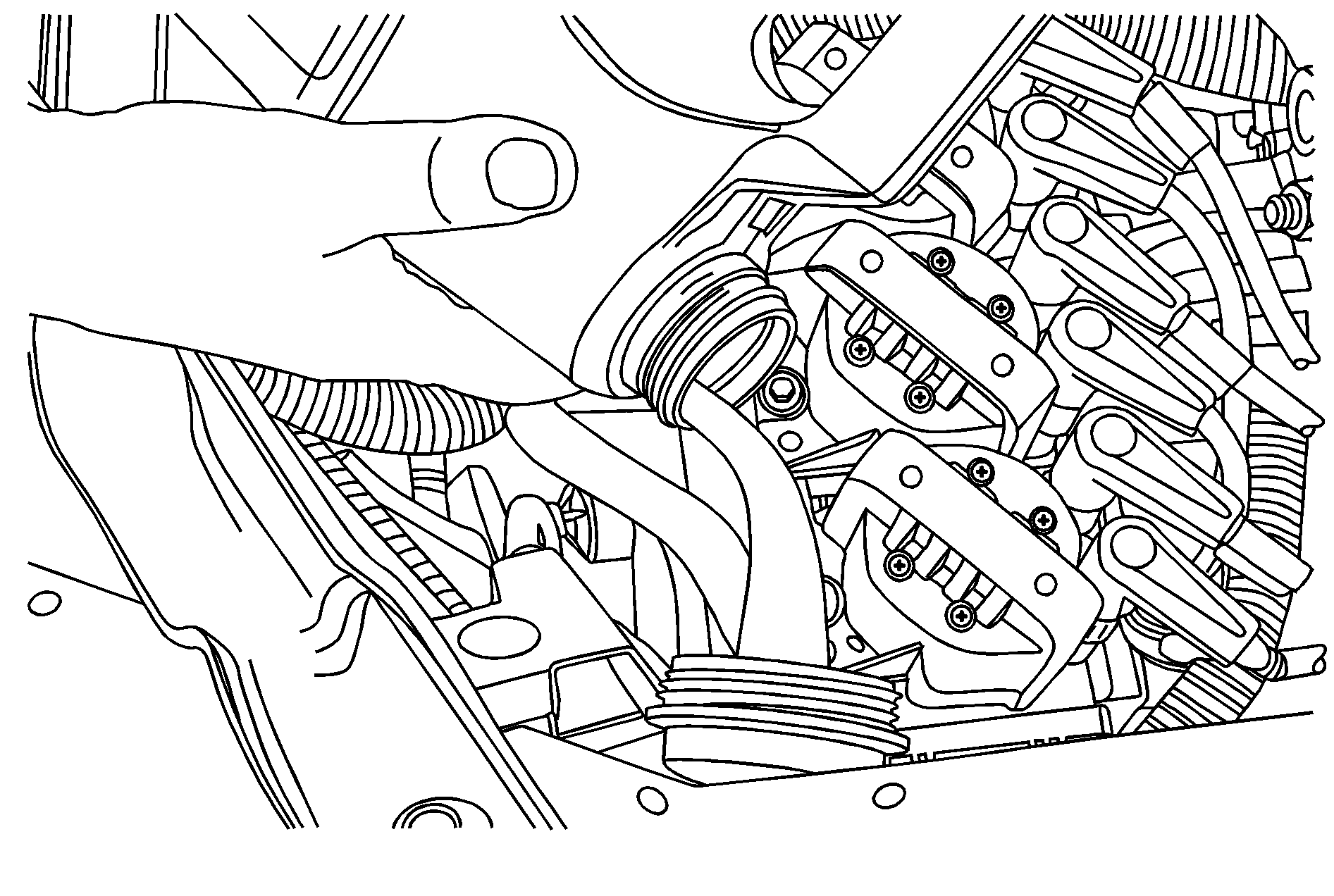
If you see a stream of coolant coming from the air bleed valve, close the valve. Otherwise, close the valve after the radiator is filled.

How to Add Coolant to the Cooling System (3.6L V6 Engine)
Notice: The engine has a specific cooling system drain and fill procedure. Failure to follow this procedure could cause the engine to overheat and be severely damaged. If the engine's cooling system needs to be drained and re-filled, please see the dealer/retailer.
- Turn the pressure cap slowly counterclockwise. If you hear a hiss, wait for that to stop. A hiss means that there is still some pressure left.
- Then keep turning the pressure cap and remove it.
- Fill the cooling system with the proper DEX-COOL® coolant mixture, up to the base of the filler neck. See Engine Coolant for more information about the proper coolant mixture.
- Rinse or wipe any spilled coolant from the engine and the compartment.
- Then fill the coolant recovery tank to the cold fill line.
- Reinstall the coolant recovery tank cap and the pressure cap.
- If the coolant in the recovery tank is constantly low, you should have your dealer/retailer service department inspect the vehicle for leaks.

You can remove the pressure cap when the cooling system, including the pressure cap and upper radiator hose is no longer hot.
Caution: You can be burned if you spill coolant on hot engine parts. Coolant contains ethylene glycol and it will burn if the engine parts are hot enough. Do not spill coolant on a hot engine.
